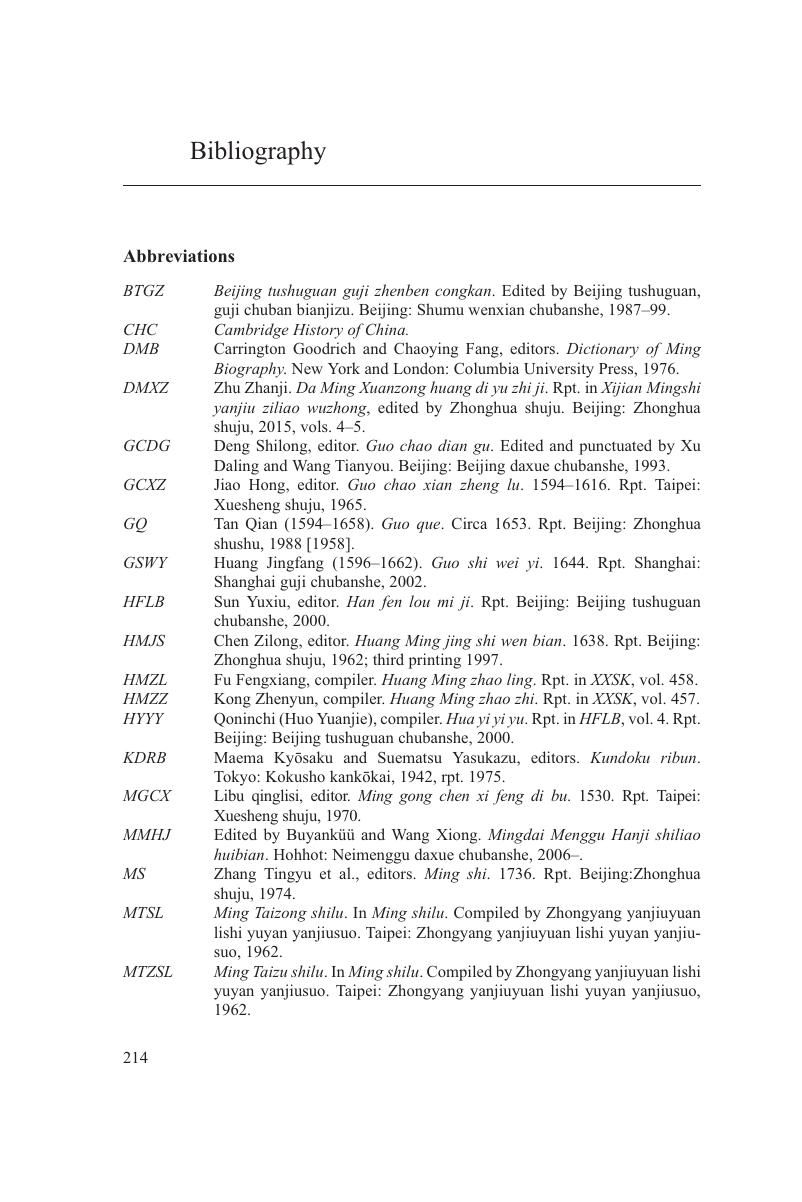Book contents
- Ming China and Its Allies
- Ming China and Its Allies
- Copyright page
- Dedication
- Contents
- Maps
- Acknowledgments
- Abbreviations
- Introduction
- 1 March to Power in a Chinggisid World
- 2 Search for Control
- 3 Mongol Nobles at the Ming Court
- 4 The Struggle for the Chinggisid Legacy
- 5 Allies and Commensurability
- Conclusion
- Bibliography
- Index
- References
Bibliography
Published online by Cambridge University Press: 10 December 2019
- Ming China and Its Allies
- Ming China and Its Allies
- Copyright page
- Dedication
- Contents
- Maps
- Acknowledgments
- Abbreviations
- Introduction
- 1 March to Power in a Chinggisid World
- 2 Search for Control
- 3 Mongol Nobles at the Ming Court
- 4 The Struggle for the Chinggisid Legacy
- 5 Allies and Commensurability
- Conclusion
- Bibliography
- Index
- References
Summary

- Type
- Chapter
- Information
- Ming China and its AlliesImperial Rule in Eurasia, pp. 214 - 239Publisher: Cambridge University PressPrint publication year: 2020

